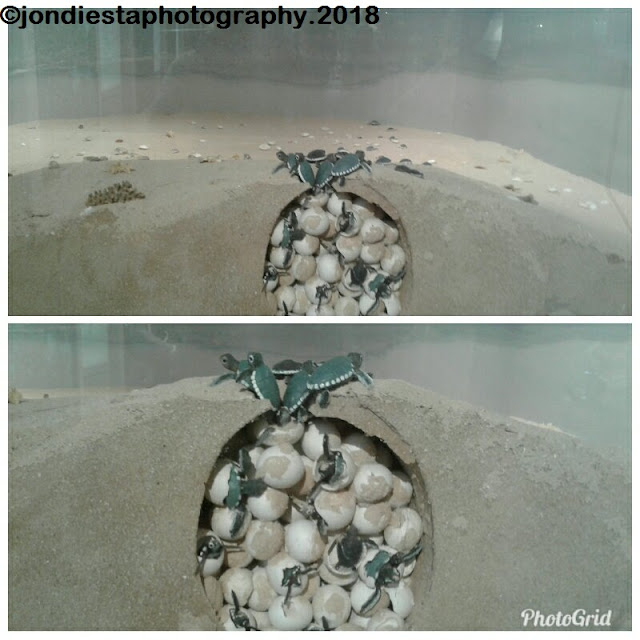It's been a nostalgic experience to discover our roots from paintings, sculptures, artifacts, writings, and archives. This time, we can trace our heritage through scientific evidences and natural beauty.
After I visited the National Museum of Fine Arts and the National Museum of Anthropology, I've got the chance to visit the third museum located within the compound of Rizal Park - the National Museum of Natural History. It was opened to the public last May 18, 2018 in order to commemorate the National Heritage Month. The building now occupied by the museum was built in the late 1930's and it became the Agriculture and Commerce Building in 1940. The building was also occupied by the Department of Tourism.
 |
| The neoclassical architecture featured on the facade of the Museum of Natural History. |
 |
| For its second week, there are so many visitors in the museum. |
When I first visited the museum, there are many people who visited there despite of the rainy weather. Other galleries are not yet open during that time. After one month, I visited the museum again for the second time where there are more galleries which are open to the public. Definitely, there is no entrance fee to be paid, but you need to leave your backpacks in the baggage counter and avoid putting flash in your cameraphones while taking pictures.
 |
| The skeleton of Lolong. |
 |
| The replica of Lolong located in the upper entrance hall of the museum. |
I took the opportunity to visit first the gallery where you can find the skeleton of Lolong, the largest crocodile in captivity. Lolong is a male saltwater crocodile (Crocodylus porous) which was captured in the wetlands of Agusan Marsh within the municipality of Bunawan, Agusan del Sur. He was estimated to be at least 50 years old during the time of his capture and he was suspected of eating a fisherman and a 12-year old as well with the loss of water buffaloes or carabaos in the town. Lolong died in captivity on 2013 due to pneumonia and cardiac arrest. Today, the remains of Lolong were moved to this museum.
 |
| It is also interesting to know that there are rhinoceros here in the Philippines during the prehistoric era. |
In the same gallery, you can also see the fossilized bones of rhinoceros (Rhinoceros philippinensis) in our country dated 709,000 years ago. The skeleton was excavated in the town of Rizal, Kalinga and it proved another evidence of pre-historic activity in our country.
 |
| Replicas of stingray, whale shark and dolphins. |
 |
| Sunfish (above) and Napoleon wrasse (below). |
 |
| Some varieties of corals found in the Philippine seas. |
 |
| Examples of fan corals. |
 |
| Corals provide habitat and shelter for marine creatures, so we need to take care of these organisms. |
 |
| Some examples of mollusks or shells which can be found in our seas. |
 |
| Some varieties of echinoderms such as star fish and sea urchins which can be seen in our rich marine life. |
 |
| Variety of crustaceans such as crabs and lobsters which can found in our ocean. |
 |
| Giant clam |
 |
| Green turtle |
 |
| Variety of fishes which can be found in the ocean such as butterfly fish, porcupine fish, and stone fish to name a few. |
After that, you may also the visit the gallery of
Marine Realm. It features the richness of marine biodiversity in our country. You can see the replicas of some marine animals such as the sunfish, Napoleon wrasse, whale shark, dolphins and stingray. You can also see fishes, corals, crustaceans, echinoderms, mollusks, a replica of green turtle and a giant clam. Inside the gallery, there is also a submarine and an interactive video on the life under the sea.
 |
| Mangrove trail in the gallery. |
 |
| Various crabs, shrimps, lobsters and sea shells which can be found in intertidal zones. |
 |
| Echinoderms in coastal zones. |
 |
| There are also poisonous shells and mollusks! |
 |
| Venomous or poisonous marine creatures such as stonefish, crown of thorns and dark-fingered crab. |
 |
| Tidal pool (above) and rocky shore (below) where there are echinoderms and sea shells. |
 |
| Different intertidal ecosystems (clockwise from left to right): Beach, rocky shore, mangrove swamp and seagrass. |
 |
| A crab and a beehive. |
 |
| Different species of birds such as kingfishers. fowls, ducks and herons. |
Lastly, I also visited the gallery for
Mangrove, Beaches and Intertidal Zones. You may experience a mangrove trail inside the gallery and the various species that you can see in the coastal habitats from beaches, rocky shores, tidal pools or lagoons, mangrove swamps and sea grasses. You can also have a glimpse of creatures found in this area as well with plants located in these areas such as sasa and nilad.
 |
| A new life. It is a hatching day for our baby turtles. |
Don't forget also to check the Turtle Islands where you can see a diorama on how turtles hatch from their eggs and kept in a nest called a clutch. It seems that it is a symbolism of a new journey, a new beginning where there are new horizons waiting for them.
Watch out for the second part of my post here in the Museum of Natural History.
Date of Travel: May 25, 2018




























No comments:
Post a Comment